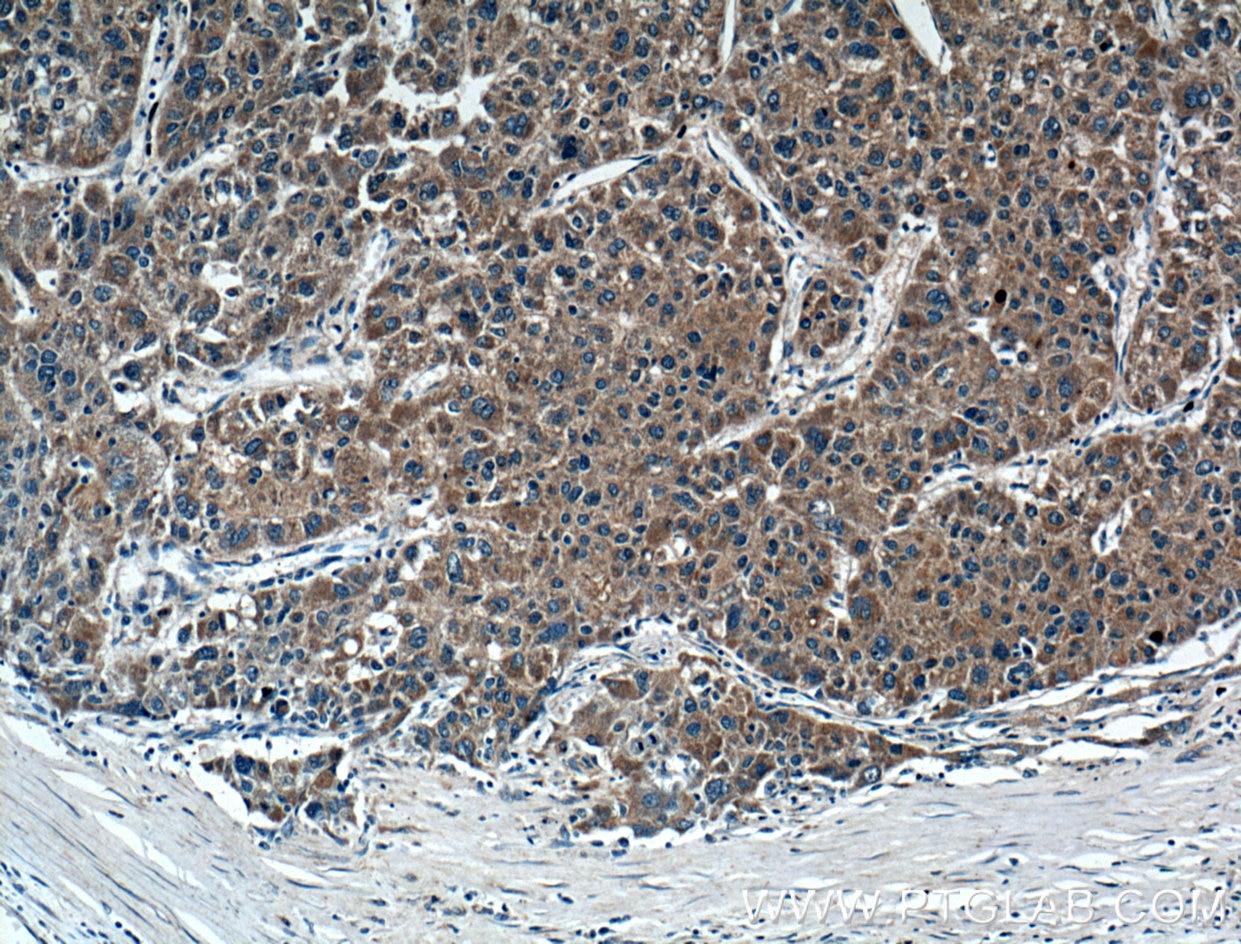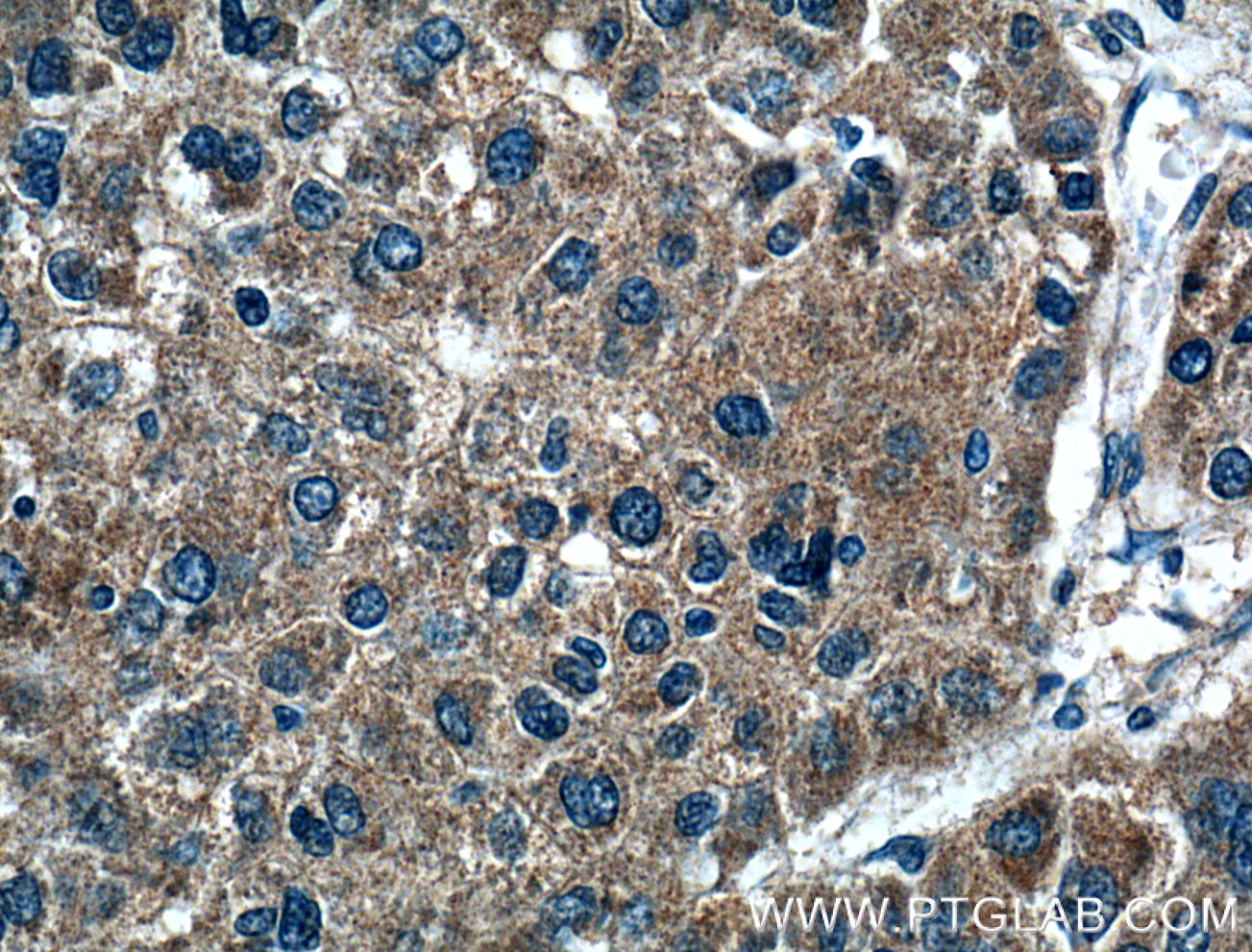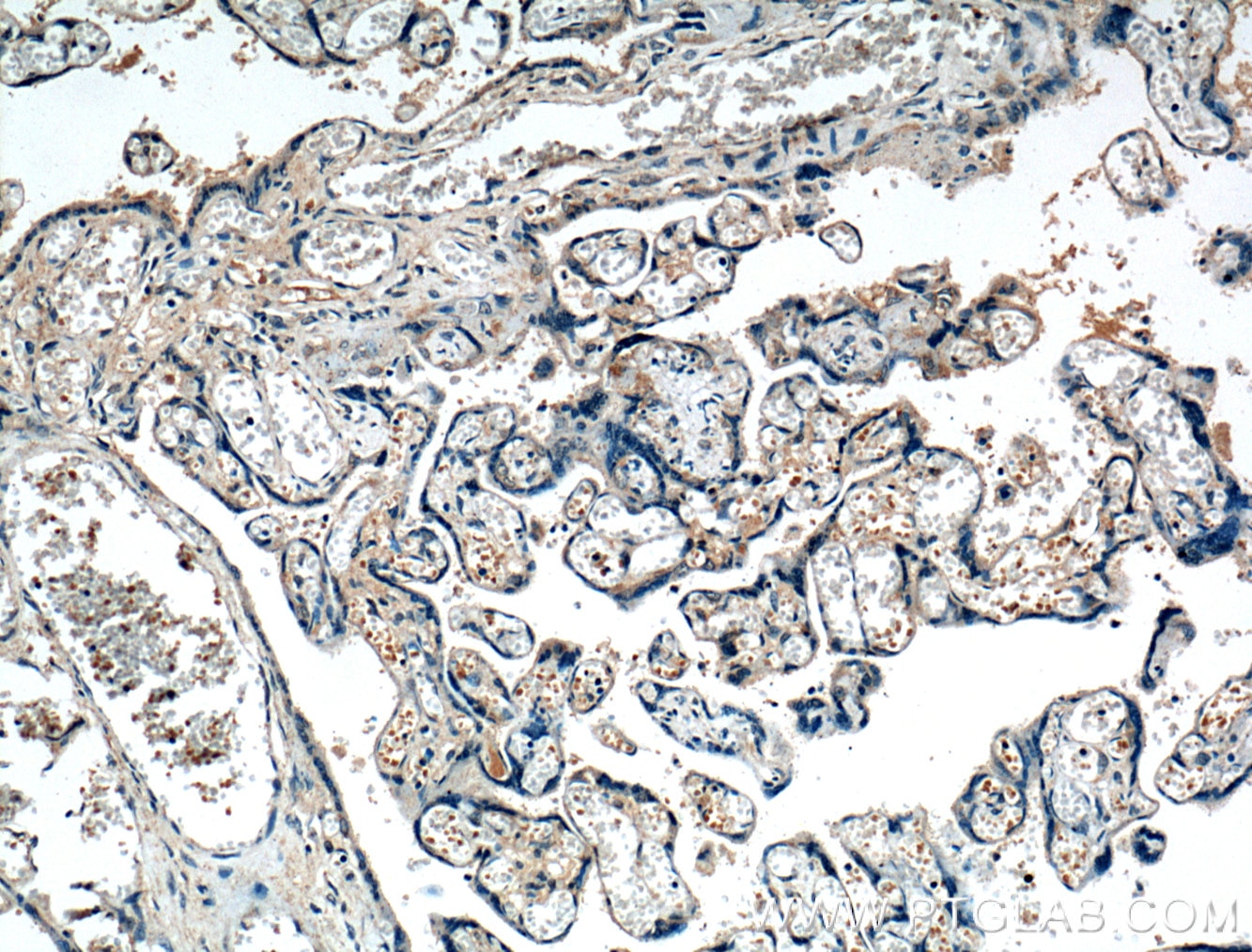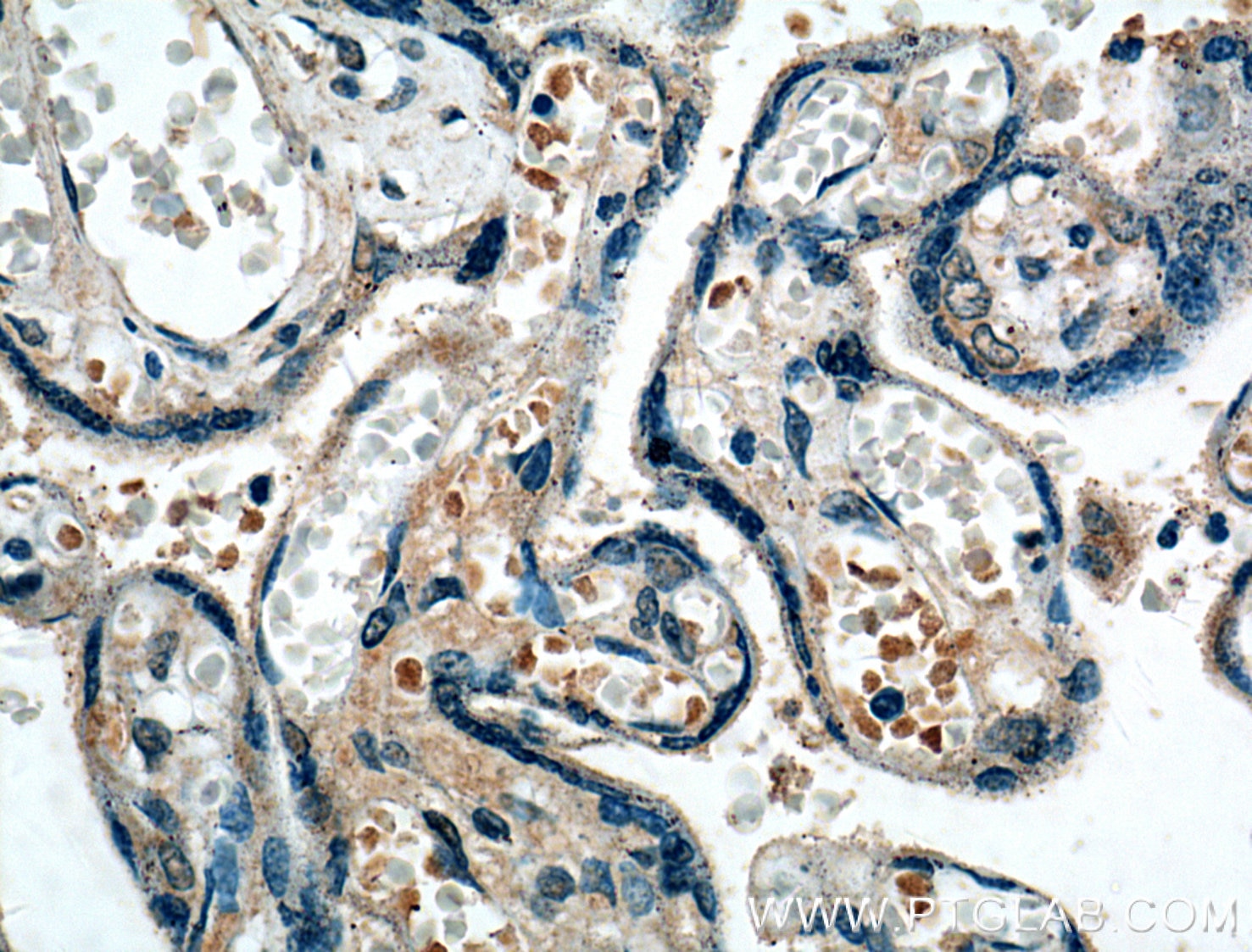FGF3 Polyklonaler Antikörper
FGF3 Polyklonal Antikörper für IHC,ELISA
Wirt / Isotyp
Kaninchen / IgG
Getestete Reaktivität
human
Anwendung
IHC,ELISA
Konjugation
Unkonjugiert
Kat-Nr. : 27100-1-AP
Synonyme
Galerie der Validierungsdaten
Geprüfte Anwendungen
| Erfolgreiche Detektion in IHC | humanes Leberkarzinomgewebe, humanes Plazenta-Gewebe Hinweis: Antigendemaskierung mit TE-Puffer pH 9,0 empfohlen. (*) Wahlweise kann die Antigendemaskierung auch mit Citratpuffer pH 6,0 erfolgen. |
Empfohlene Verdünnung
| Anwendung | Verdünnung |
|---|---|
| Immunhistochemie (IHC) | IHC : 1:50-1:500 |
| It is recommended that this reagent should be titrated in each testing system to obtain optimal results. | |
| Sample-dependent, check data in validation data gallery | |
Produktinformation
27100-1-AP bindet in IHC,ELISA FGF3 und zeigt Reaktivität mit human
| Getestete Reaktivität | human |
| Wirt / Isotyp | Kaninchen / IgG |
| Klonalität | Polyklonal |
| Typ | Antikörper |
| Immunogen | FGF3 fusion protein Ag25361 |
| Vollständiger Name | fibroblast growth factor 3 (murine mammary tumor virus integration site (v-int-2) oncogene homolog) |
| GenBank-Zugangsnummer | BC113739 |
| Gene symbol | FGF3 |
| Gene ID (NCBI) | 2248 |
| Konjugation | Unkonjugiert |
| Form | Liquid |
| Reinigungsmethode | Antigen-Affinitätsreinigung |
| Lagerungspuffer | PBS mit 0.02% Natriumazid und 50% Glycerin pH 7.3. |
| Lagerungsbedingungen | Bei -20°C lagern. Nach dem Versand ein Jahr lang stabil Aliquotieren ist bei -20oC Lagerung nicht notwendig. 20ul Größen enthalten 0,1% BSA. |
Hintergrundinformationen
Fibroblast growth factor 3 (FGF3), belonging to the family of fibroblast growth factors (FGFs), It regulates several developmental processes, including brain patterning, branching morphogenesis and limb development, by binding, dimerizing and activating cell surface FGF receptors (FGFRs). It is required for normal ear development.
Protokolle
| Produktspezifische Protokolle | |
|---|---|
| IHC protocol for FGF3 antibody 27100-1-AP | Protokoll herunterladen |
| Standard-Protokolle | |
|---|---|
| Klicken Sie hier, um unsere Standardprotokolle anzuzeigen |





